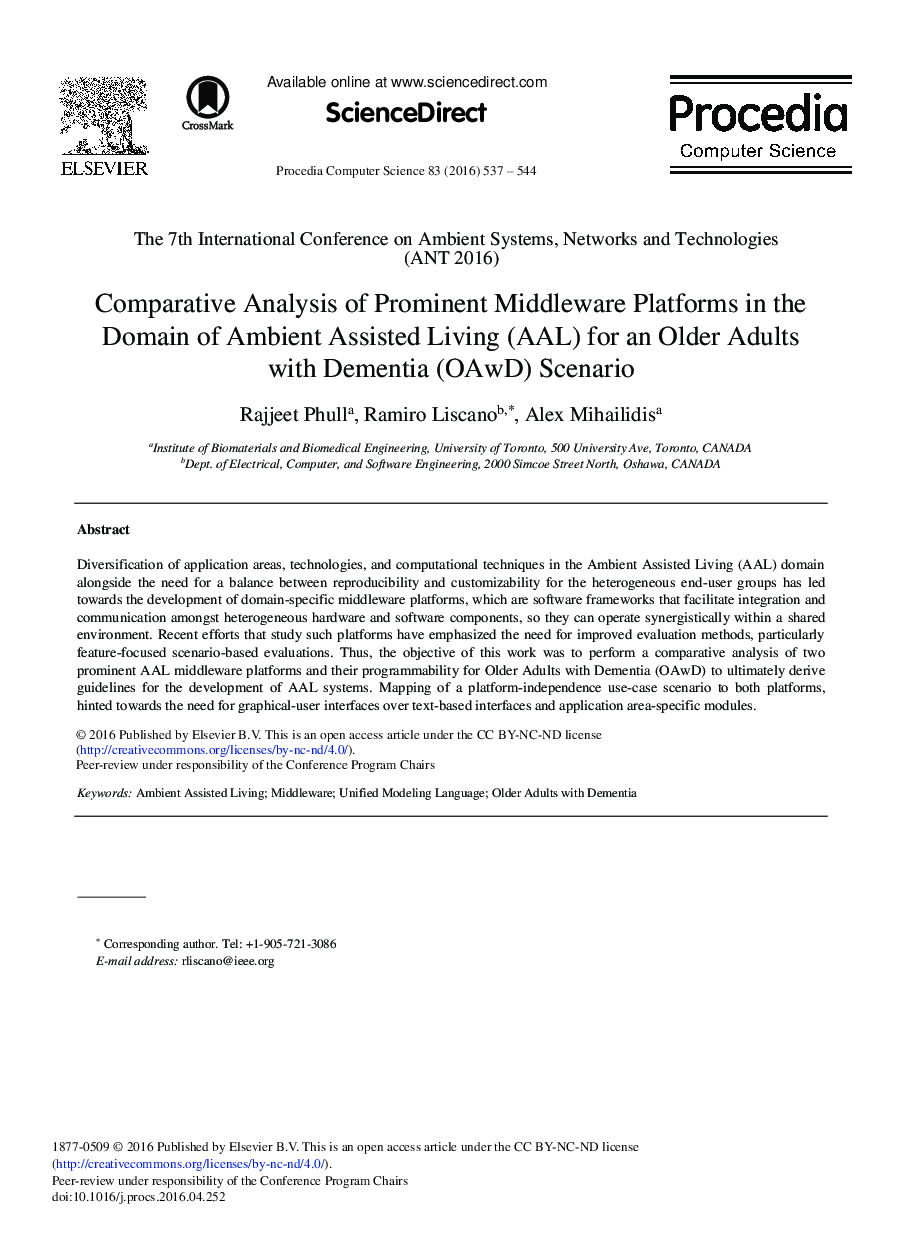| Article ID | Journal | Published Year | Pages | File Type |
|---|---|---|---|---|
| 485399 | Procedia Computer Science | 2016 | 8 Pages |
Diversification of application areas, technologies, and computational techniques in the Ambient Assisted Living (AAL) domain alongside the need for a balance between reproducibility and customizability for the heterogeneous end-user groups has led towards the development of domain-specific middleware platforms, which are software frameworks that facilitate integration and communication amongst heterogeneous hardware and software components, so they can operate synergistically within a shared environment. Recent efforts that study such platforms have emphasized the need for improved evaluation methods, particularly feature-focused scenario-based evaluations. Thus, the objective of this work was to perform a comparative analysis of two prominent AAL middleware platforms and their programmability for Older Adults with Dementia (OAwD) to ultimately derive guidelines for the development of AAL systems. Mapping of a platform-independence use-case scenario to both platforms, hinted towards the need for graphical-user interfaces over text-based interfaces and application area-specific modules.
